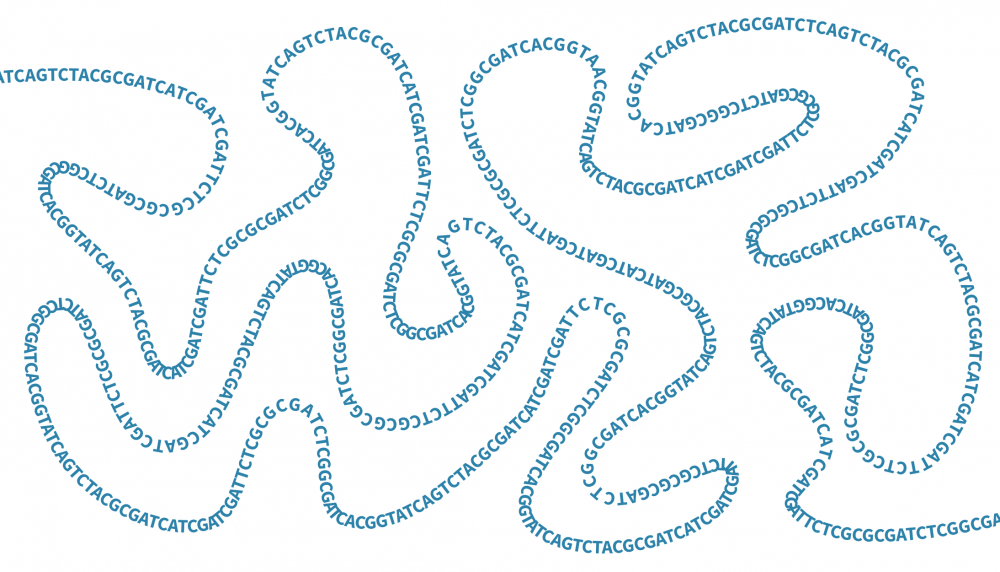Benefits and Applications of Long-Read Sequencing
Discover the benefits and applications of long-read sequencing with Oxford Nanopore and PacBio. Learn how long-read genomics, transcriptomics, and epigenomics can power your research with expert bioinformatics support.

In recent years, long-read sequencing technologies have transformed omics research. Unlike short-read approaches, third-generation sequencing platforms from Oxford Nanopore Technologies (ONT) and Pacific Biosciences (PacBio) can generate reads tens to hundreds of kilobases long. Long reads provide a more complete view of complex genomes, transcript isoforms, and epigenetic modifications, making these platforms powerful tools for research applications in academia and industry.
As a bioinformatics service provider, we help researchers harness the full potential of long reads through robust, tailored analysis workflows. Below, we explore the benefits of long-read sequencing and highlight key applications across life science disciplines.
Oxford Nanopore vs. PacBio: Two Long-Read Leaders
Both ONT and PacBio are at the forefront of long-read sequencing; either platform can be used to generate high-quality data for a variety of research applications. Still, each platform has its own unique strengths.
Oxford Nanopore Technologies (ONT): From the portable MinION to the high-throughput PromethION, ONT devices offer high flexibility. These sequencers can generate megabase-scale reads, a valuable feature for resolving highly repetitive or complex genomic regions. ONT devices also enable direct detection of DNA and RNA modifications, including DNA methylation, providing a multi-omic readout in a single run.
Pacific Biosciences (PacBio): PacBio’s HiFi platform generates long reads in the 15-25 kb range with extremely high consensus accuracy (Q30+). This accuracy makes PacBio sequencing a method of choice for high-confidence variant detection and reference-grade genome assemblies. PacBio sequencing can also directly detect DNA methylation without modified library preparation steps.
Many researchers adopt a hybrid approach, combining ONT’s ultra-long reads with PacBio or Illumina (short) reads to maximize continuity and precision. Both ONT and PacBio platforms can also generate data at single-cell resolution.
Why Long Read Sequencing?
Resolving Complex Genomic Regions
Many genomes are full of repetitive regions and multicopy sequences, from tiny microsatellites to larger transposable elements. With fragments limited to 50-300 base pairs, short-read platforms often struggle to uniquely map repeated sequences, leading to fragmented or incomplete assemblies.
In contrast, third-generation sequencing platforms reach beyond previous limits. PacBio HiFi sequencing produces reads up to ~25 kilobases, while ONT ultra-long reads can span hundreds of kilobases or more. These longer reads span repetitive sequences in a single pass, resulting in more contiguous genome assemblies and more accurate structural variant detection.
Phasing Haplotypes
Another major advantage of long reads is improved haplotype phasing, or the assignment of variants to the same parental chromosome. This capability is highly valuable for studying allele-specific gene expression, genomic imprinting, rare genetic conditions, population genetics, and other research areas where variant context matters.
Capturing Full-Length Transcripts
In transcriptomics, long reads capture full-length isoform information without the need for fragment reconstruction. Both ONT and PacBio can generate long cDNA reads, while ONT can additionally sequence RNA directly. Sequencing complete transcripts helps researchers to identify novel isoforms, characterise complex alternative splicing patterns, and quantify expression at the isoform level with high confidence. Long-read transcriptomics is also a powerful tool for studying non-coding RNAs and clinically-relevant fusion transcripts.
Direct Epigenetic Insights
One of the most exciting features of long-read sequencing is the ability to detect DNA and RNA modifications directly, without the need for chemical treatments like bisulfite conversion. This direct, modification-aware sequencing eliminates the need for additional experimental steps, making each long-read sequencing run its own multiomics experiment.
Applications of Long-Read Sequencing
Human Health and Clinical Genomics
In human genomics, long-read sequencing is uncovering hidden variation that directly impacts patient care (1). Structural variants, repeat expansions, and complex rearrangements which are difficult to detect with short-read platforms can be captured in a single long-read span. This has led to immediate applications in rare disease diagnosis, where certain types of variants were previously undetectable. In cancer research, long reads are enabling the detection of fusion transcripts, isoform diversity, and allele-specific expression, improving our understanding of tumor biology and treatment responses.
Agriculture and Conservation Genomics
Crop and livestock improvement help make global food sources safer and more sustainable. Long-read sequencing has drastically accelerated the production of reference-quality genome assemblies, capturing repeats, centromeres, and complex gene families that contribute to agriculturally important traits (2). Reference genome resources support marker-assisted breeding and the identification of disease-resistant genes, while also supporting conservation efforts for endangered animals and plant varieties.
Microbiology and Infectious Disease
For microbial genomics, long reads allow researchers to obtain genome assemblies from bacteria, viruses, and fungi in a single experiment. This is particularly powerful in outbreak surveillance, where portable Oxford Nanopore sequencing can provide near real-time pathogen detection in the field (3). Long-read sequencing also enables strain-level resolution in antimicrobial resistance research, informing public health responses and clinical decision-making.
Environmental and Metagenomics
From soil and water to the human gut, microbial communities are highly diverse and dynamic. Long-read metagenomics delivers strain-resolved profiles that reveal subtle ecological interactions, horizontal gene transfer, and metabolic potential (4). These capabilities are invaluable for studying the role of the gut microbiome in human health, monitoring environmental change, and even informing industrial processes such as wastewater treatment.
Biopharmaceuticals and Biotechnology
Biopharmaceutical companies are increasingly turning to long-read sequencing to optimise drug development and biologics production. Full-length isoform analysis can reveal previously hidden disease mechanisms, leading to new drug targets (5). Additionally, microbial engineering projects benefit from cost-effective reference assemblies that capture plasmids, mobile elements, and synthetic constructs in full. These insights reduce drug and product development time, making new therapeutics accessible more quickly.
Challenges and Considerations in Long-Read Sequencing
While long-read sequencing offers significant advantages, there are important factors to consider when planning a project.
Cost Per-Base
Although the price of long-read sequencing has decreased in recent years, it still remains higher compared to short-read platforms. For projects requiring ultra-deep coverage, researchers often adopt hybrid strategies to balance accuracy, throughput, and cost.
Learning Curve
Even when the right sequencing platform is chosen, the real challenge often lies in turning raw data into biological insights. PacBio HiFi data offers exceptional accuracy but requires careful handling of large, high-fidelity datasets to ensure optimal variant calling and assembly quality. Similarly, benchtop ONT devices offer unmatched flexibility in experimental design, but they also come with a steeper learning curve in terms of run setup, flow cell management, and the nuanced tradeoffs between read length, throughput, and accuracy.
Analysis support
Regardless of platform, downstream analysis requires knowledge of the latest software tools, workflow best practices, and validation steps. Suboptimal data handling risks missed deadlines, wasted resources, or even misleading conclusions. Alternatively, expert bioinformatics support can help researchers quickly navigate analysis complexities and maximise the value of each dataset.
Conclusion
Long-read sequencing is no longer niche. It has become a key technology in genomics, transcriptomics, and epigenomics research. By resolving complex regions, capturing isoforms, and directly profiling the epigenome, PacBio and Oxford Nanopore are being applied at the cutting edge of medicine, agriculture, microbiology, and biotechnology.
References
- Mantere T, Kersten S, Hoischen A. Long-Read Sequencing Emerging in Medical Genetics. Front Genet. 2019;10:426. Published 2019 May 7. doi:10.3389/fgene.2019.00426
- Michael TP, VanBuren R. Building near-complete plant genomes. Curr Opin Plant Biol. 2020;54:26-33. doi:10.1016/j.pbi.2019.12.009
- Quick J, Loman NJ, Duraffour S, et al. Real-time, portable genome sequencing for Ebola surveillance. Nature. 2016;530(7589):228-232. doi:10.1038/nature16996
- Moss EL, Maghini DG, Bhatt AS. Complete, closed bacterial genomes from microbiomes using nanopore sequencing. Nat Biotechnol. 2020;38(6):701-707. doi:10.1038/s41587-020-0422-6
- Tang AD, Soulette CM, van Baren MJ, et al. Full-length transcript characterization of SF3B1 mutation in chronic lymphocytic leukemia reveals downregulation of retained introns. Nat Commun. 2020;11(1):1438. Published 2020 Mar 18. doi:10.1038/s41467-020-15171-6
Contact us
Leave your email address here with a brief description of your needs, and we will contact you to get things moving forward!

